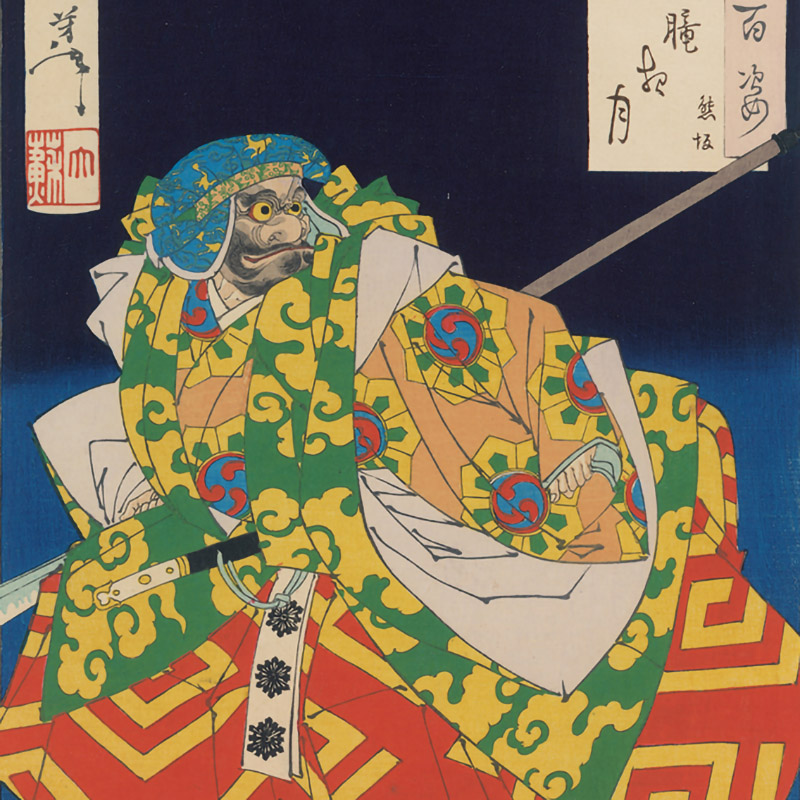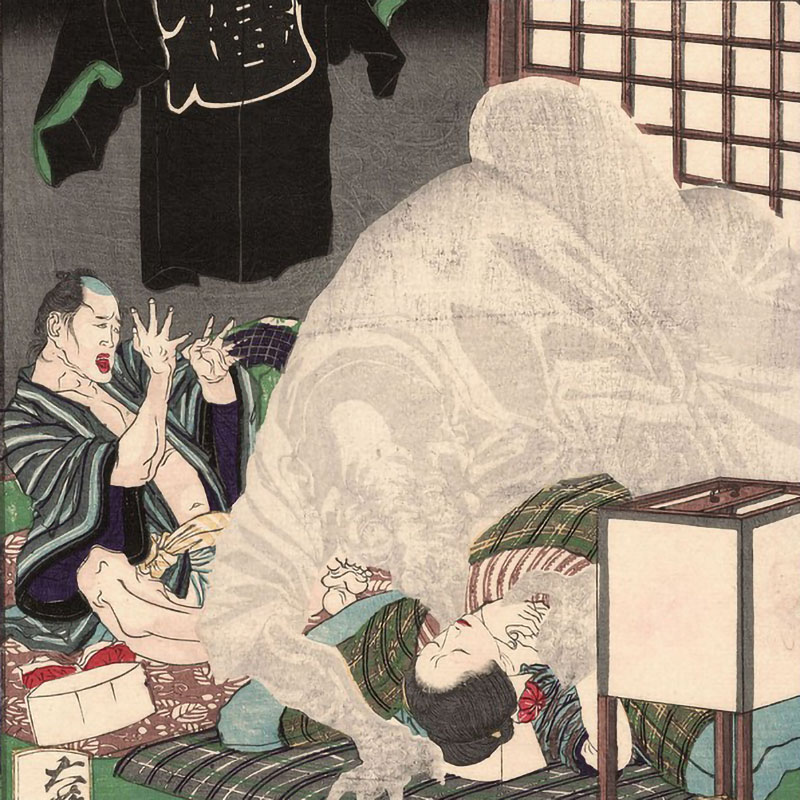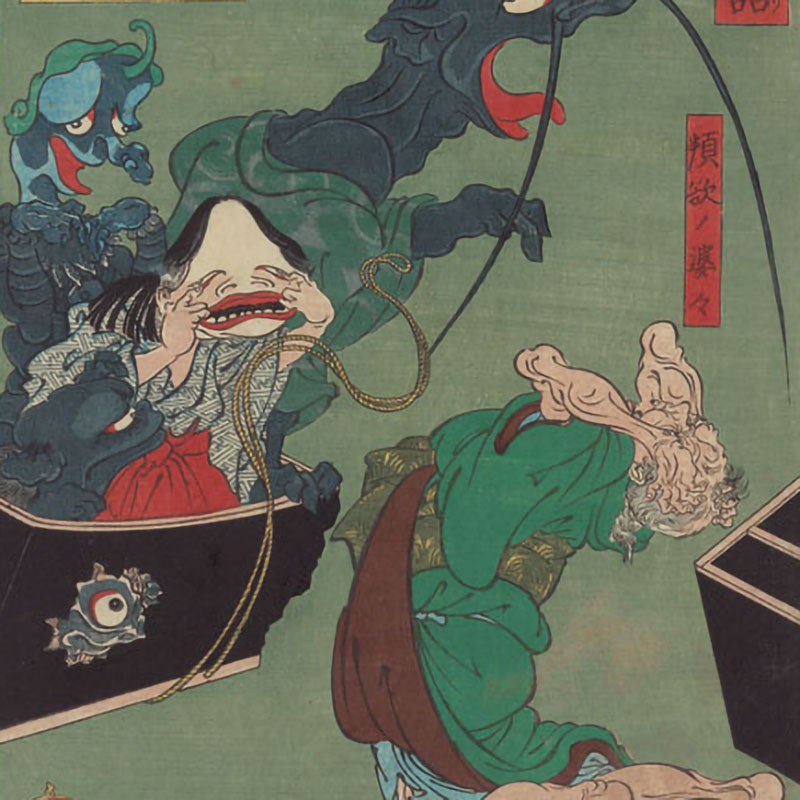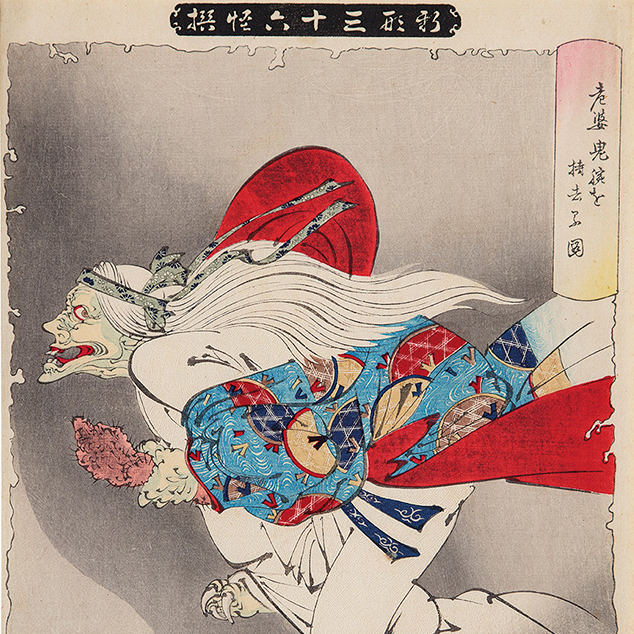Tsukiyoka Yoshitoshi
Edo 1839 – Tokyo 1892
1866
Vertical ōban triptych, each sheet measuring 360 x 237 mm; overall 360 x 711 mm
Signed: Ikkaisai Yoshitoshi hitsu and red kiri seal
Publisher: Yamajin
Fine impression, with extensive use of mica powder on the black background. Fine colour and condition, margins at top sides.
The triptych is one of the most important early works by Yoshitoshi. It depicts a difficult battle from the Taiheiki (Chronicle of Great Peace), a Japanese historical epic written in the late 14th century and covering the period from 1319 to 1367. The book's stories had great popularity in the nineteenth century, when they became the subject of musha-e, prints depicting warriors, drawn by Kuniyoshi and his school. Very often the heroes drawn by ukiyo-e artists referred to those of the most recent events in Japan's unification under the Tokugawa Shogunate, events that could not have been explicitly dealt, to avoid censorship.
A mine explodes in radiating jets of flames, sending samurai tumbling head over heels through the night sky. At right, Masakiyo (who is probably meant to represent the famous general Kato Kiyomasa, 1561-1611) grips the reins as his horse rears in fright, trampling men beneath its hooves. At lower left, another warrior turns his head away from the fire, flinging one hand up in the air while still holding his sword. Yoshitoshi animates the scene even further with gray spirals of wind between the flames, punctuated by the starbursts of exploding shells. A dynamic image with an unusual composition. Although set in the fourteenth century, in fact this is a comment on the recent (spring of 1866) campaign of the Tokugawa Shogun Iemochi. He had temporarily defeated the dissident Choshu samurai who had shelled the Shogun’s palace in Edo in 1864.
Information on the master
Yoshitoshi was one of the last great masters, and one of the great innovative and creative geniuses of the Japanese woodblock print. At the age of eleven, he was enrolled as a student of the school of Kuniyoshi. His early work is full of extremely graphic violence and death, perhaps mirroring the lawlessness and violence of Japan around him, which was simultaneously going through the breakdown of the feudal system imposed by the Tokugawa shoguns, as well as the impact of the West. By 1871, Yoshitoshi became severely depressed. Unable to work, he hardly produced any prints for two years. In 1873 he recovered from his depression and changed his name to Taiso, which means great resurrection. In 1882 he was employed by a newspaper. This gave him a steady income and marked the end of years of poverty. His last years were among his most productive, not only in terms of quantity, but also in terms of artistic quality. In 1885 the first designs of One Hundred Aspects of the Moon were published. This series was extremely popular. In 1888 the series 32 Aspects of Customs and Manners was published, a series of women's prints. In 1889 a new series with ghost subjects came on the market: New Form of 36 Ghosts. The symptoms of mental illness became more and more frequent. Nevertheless Yoshitoshi continued to work. He died in 1892 from a cerebral hemorrhage at the age of 53.
Other works of the master
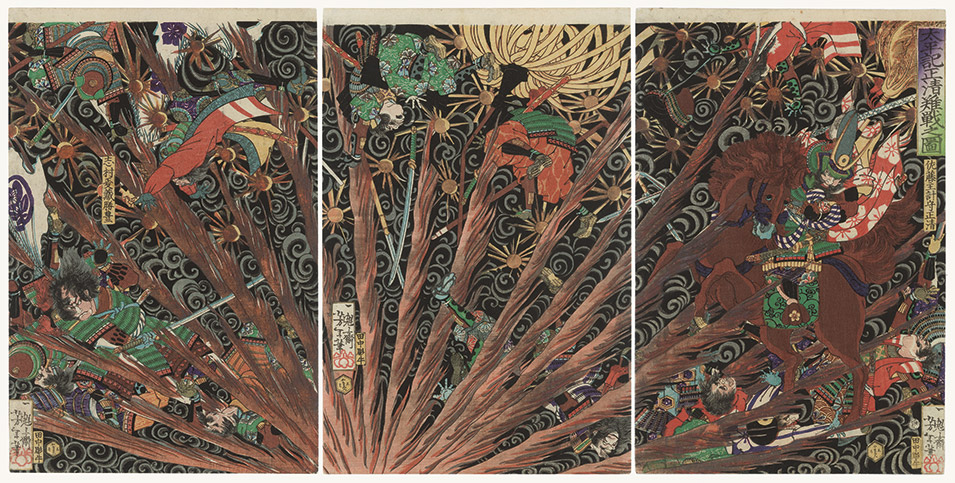
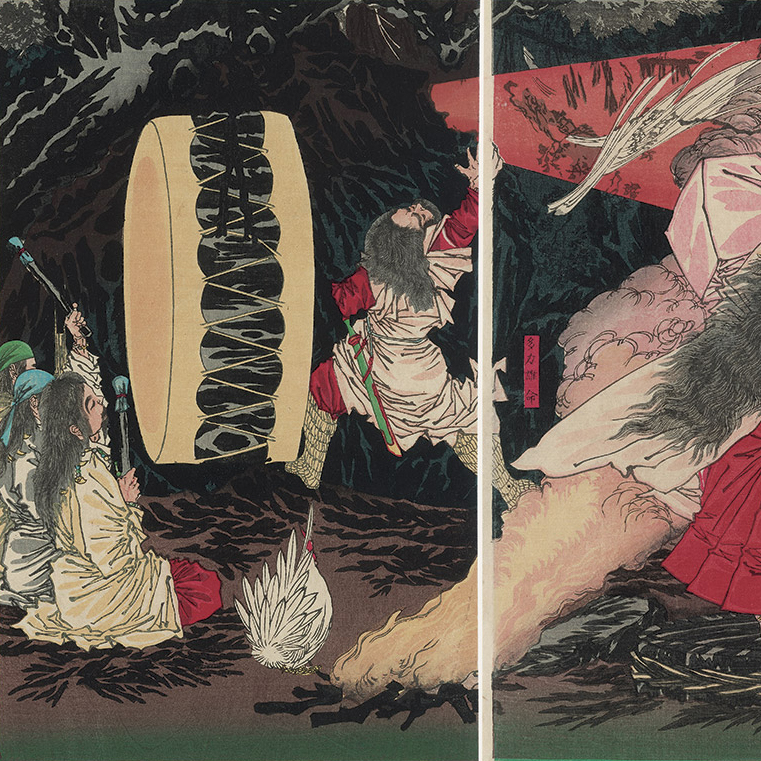
.jpg)
